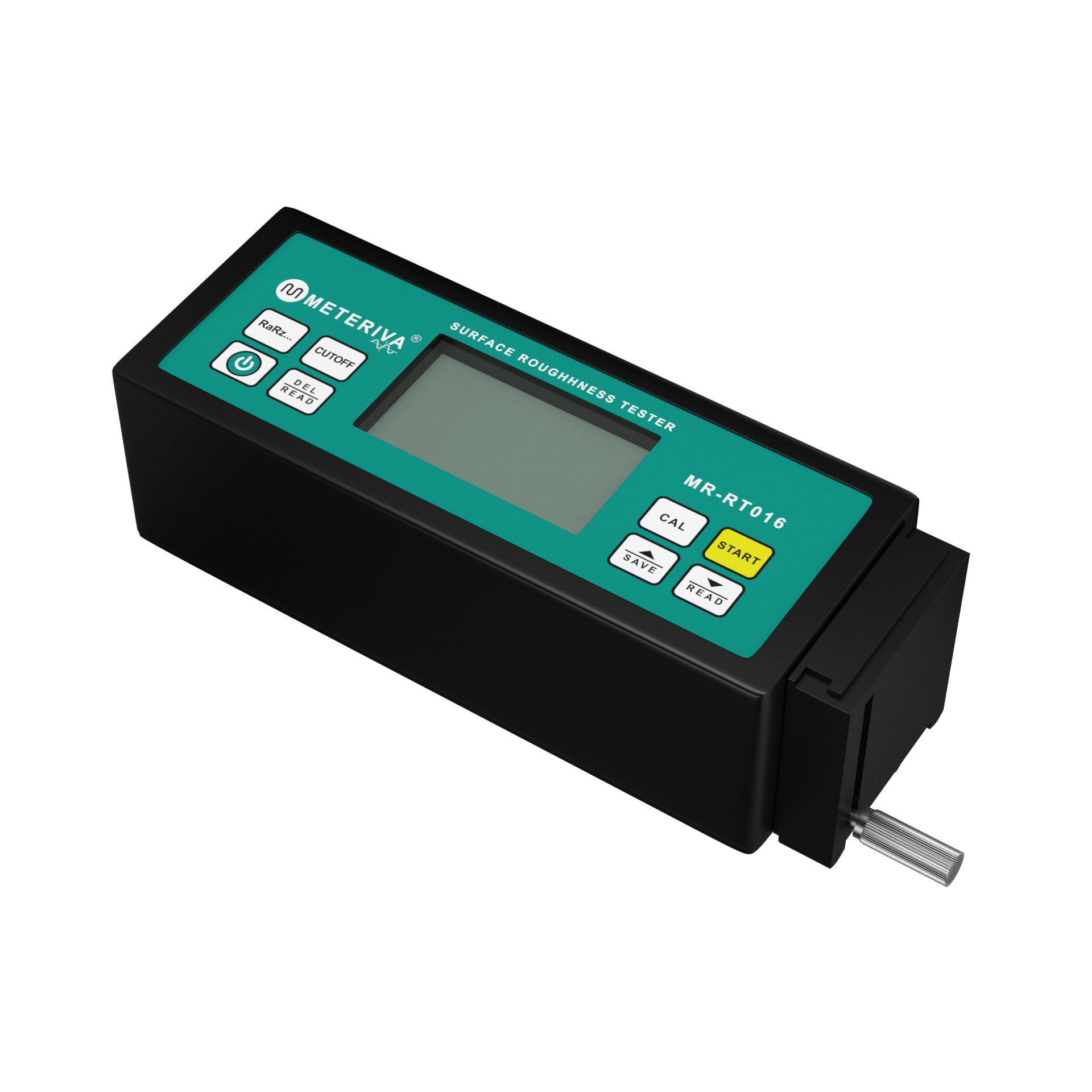Roughness Tester
METERIVA Roughness tester
Surface roughness is crucial for assessing suitability of surface. Rough surfaces wear faster than smooth ones. They’re prone to corrosion and cracks but can aid adhesion. A roughness tester quickly gauges surface texture. It displays roughness depth (Rz) and mean value (Ra) in micrometers. Measurement involves applying a roughness filter. Various standards recommend different filters, like the Gaussian filter in ISO standards.
Roughness Tester In Use
Buying tips for Roughness Tester
The shape of a surface or object is decided by its basic form, waviness, and roughness. Waviness and roughness talk about small bumps from the ideal shape. Roughness affects both how things look and how useful they are. Rough surfaces are good for some things, like stopping slips. That’s why we put sand on icy paths and use rough flooring where slipping is risky. To get the right roughness, parts are often treated specially, like grinding or polishing.
Describing and measuring roughness
Some standards tell us how to talk about and measure surface roughness. For example:
– DIN 4760 talks about shapes.
– ISO 1302 (2002) says how to explain surface texture in documents.
– ISO 4287 (1997) explains terms and methods for measuring surface texture.
– ISO 4288 (1996) tells us how to measure surface texture.
– ISO 13565-(1996/98) talks about surfaces with special properties.
ISO 25178 (2016) talks about the 3D texture of surfaces. Some industries follow ANSI B 46.1 or JIS B 0601.
Values for describing roughness
Roughness isn’t shown by one number but by a few. Which ones matter depend on the surface and what it’s for.
– Ra: Average roughness.
– Rq: Square mean roughness.
– Rz: Roughness depth.
– Rz1max: Max roughness depth.
– Rt: Total height of roughness.
Optical and tactile ways to measure
You can measure roughness with light or a probe. Probes move along the surface to find bumps. The shape and size of the probe decide how well it finds bumps. Machines help do the math.
Choosing a roughness tester
ISO 3274 (1998) sets rules for measuring tools. It helps compare different tools and see how they affect the result.
Measuring and filtering
Tools can measure different roughness measures. They use different ranges and filters. Filters help separate big bumps from small ones.
Accuracy
Tools have a margin of error. You can check this with tests on known surfaces.
Display and controls
Different tools have different displays and buttons. Some are simple, others have touchscreens.
Memory and Software
Tools can store data or send it to a computer. Some have Bluetooth for wireless transfer.
Why Bluetooth matters
Bluetooth lets you send data to your phone or tablet. This makes it easier to analyze and share results.
Calibration
You can check and adjust tool accuracy. Some come with standards and pads for this.
More about roughness tester
METERIVA makes roughness testers. They’re good for many jobs, from labs to factories. They’re tough and last long. They come in different sizes and accuracies. Most have batteries and cases. Some have software for computers.

